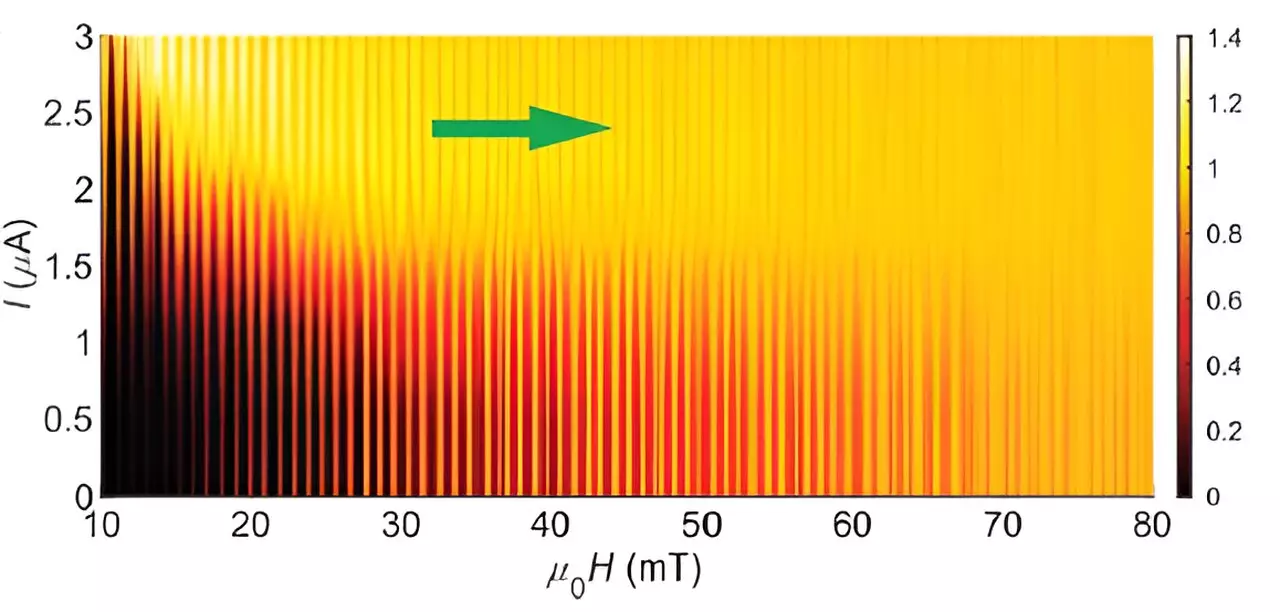Topological materials have recently become a focal point of research due to their fascinating and unconventional properties. Unlike traditional materials, their unique characteristics stem from the wavefunctions of their electrons being knotted or twisted, which leads to the emergence of phenomena that challenge our understanding of physics. As these wavefunctions interact with surrounding environments, a compelling behavior arises at the edges of these materials, resulting in what scientists describe as edge states. Delving into this intricate subject, particularly focusing on topological superconductors like molybdenum telluride (MoTe2), reveals a promising future for quantum technologies.
At the heart of topological materials lies their distinctive electronic wavefunction. Unlike ordinary conductors where electron behavior is relatively straightforward, the wavefunctions in topological materials display complex interactions due to their twisted nature. When these materials interface with their environment, they are compelled to accommodate dramatic changes in their electron dynamics. This unwrapping or unwinding process gives rise to edge states, where the electrons behave differently compared to the bulk of the material. The research surrounding these edge states is key to unlocking new applications in fields like quantum computing and advanced electronics.
The concept of superconductivity adds another layer of complexity to the study of topological materials. In a superconductor, the electrons are paired in a way that allows them to move through the material without resistance. When a topological material, such as MoTe2, is superconducting, it exhibits the dual nature of superconductivity at both its surfaces and in its interior, yet these states behave quite differently. This paradox is akin to two distinct bodies of water that, while touching, do not mix—a phenomenon that triggers excitement and intrigue among scientists.
Research detailed in the journal Nature Physics sheds light on a particularly striking behavior in MoTe2, showcasing how edge superconducting currents can withstand significant variations in the “glue” that links these paired electrons. This finding is vital; the robustness of these edge currents suggests new avenues for leveraging superconductors in technology applications.
One of the most groundbreaking notions surrounding topological superconductors is their potential incorporation of anyons—exotic particles that possess memory of their positional exchanges. This characteristic positions anyons as candidates for groundwork in fault-tolerant quantum computing, enabling operations to be conducted with a much lower risk of error. As topological superconductors carry unique edge supercurrents, researchers actively seek methods to manipulate these currents to harness anyons effectively.
In their study, researchers deposited niobium (Nb) atop MoTe2 to amplify what they refer to as the pair potential—the strength of the electron-pairing glue. This approach resulted in an intriguing phenomenon where the pair potential of Nb would spill into MoTe2, heightening the supercurrent oscillations. However, the integration of these two materials revealed critical incompatibilities, as their electron pairing behaviors differed. Consequently, the wavefunction that commands the edge electrons fluctuated based on which material’s pair potential was dominant.
The oscillation of supercurrents presents an opportunity for real-time observations of the interactions between edge and bulk states. Scientists discovered that edge supercurrent oscillations manifest more rapidly than those in the internal bulk of MoTe2. Furthermore, the nature of these oscillations varied significantly; they were characterized by noise when the edge and bulk pair potentials differed, while a harmonious oscillation ensued when both materials aligned. This finding is imperative, as it not only confirms the existence of edge supercurrents but also signifies a potential method to monitor critical behaviors of superconducting electrons across various conditions.
The implications of this research extend beyond theoretical explorations. The ability to manage the distinctive currents along the edges of topological superconductors like MoTe2 opens the door to developing advanced quantum technologies and enhancing the performance of energy-efficient electronics. As these materials are further understood and utilized, they pave the way for a new frontier of innovation—blurring the lines between theoretical physics and practical application.
The study of topological superconductors exemplifies a fascinating intersection of modern physics and advanced technological potential. As researchers continue to unravel the complexities of these materials, the promise of a new epoch in quantum technology looms closer than ever.


Leave a Reply